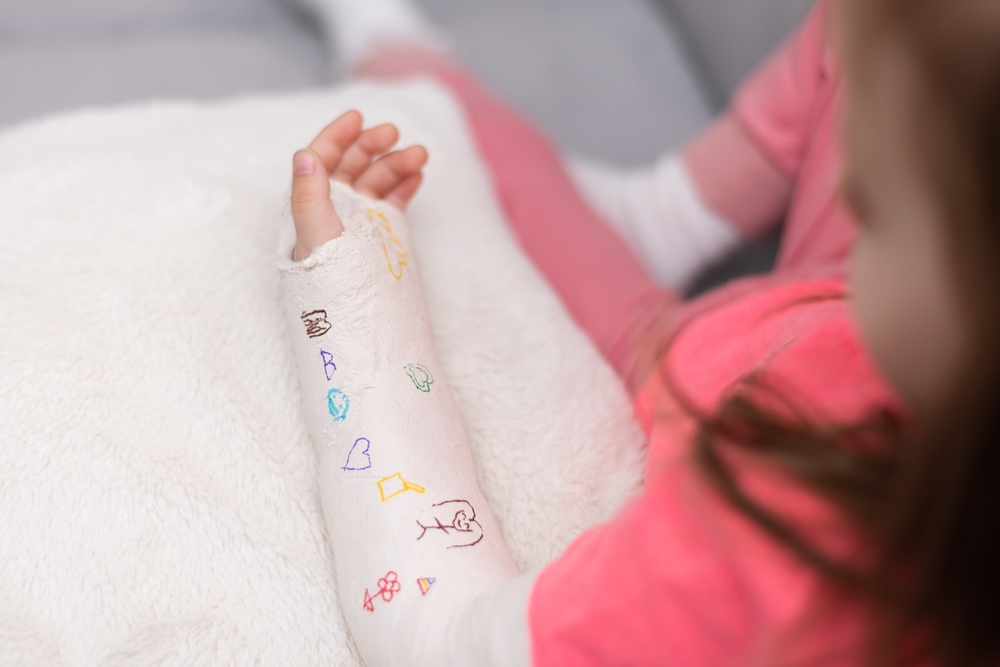New research from the University of Oxford has shown that doctors can simplify treatment for the most common fracture in children, reducing NHS costs.

The FORCE study found there was no difference in pain or function between children with a torus fracture of the wrist who had a rigid splint and the usual outpatient follow-up and those who received a bandage and no planned follow-up.
Torus fractures (also called buckle fractures) of the wrist are the most common type of broken bone in children, affecting about 60,000 in the UK every year. It is the mildest form of broken bone, in which the distal radius bone crushes (or buckles), instead of breaking.
National and international guidelines and practice for treatment varies. Doctors prescribe either the use of a plaster cast or hard splint to immobilise the wrist, or offer a bandage, but no ‘standard’ treatment has been agreed.
Daniel Perry, Associate Professor, Orthopaedics and Trauma Surgery at the University of Oxford’s Nuffield Department of Orthopaedics, Rheumatology and Musculoskeletal Sciences (NDORMS), explained: “It is a common belief amongst both families and clinicians that a fracture needs plaster cast immobilisation to ensure adequate healing.
“However, evidence suggested that a bandage or no treatment was just as effective. We started the FORCE trial because it was not clear how much difference each treatment made to a patient’s recovery.”
The study, published in The Lancet, recruited 965 children aged between four and 15 years with a radiologically confirmed torus fracture of the distal radius. They were randomised equally to receive either a bandage and no planned follow-up, or a rigid splint and the usual outpatient follow-up.
Patients recorded their level of pain, recovery using the arm, quality of life, complications encountered, and school absences for a period of six weeks after the treatment.
The study found that a bandage with no planned follow-up is equally as good as restricting movement with a hard splint and outpatient follow-up.
Daniel Perry said: “FORCE highlights the over-treatment that happens in many parts of practice. As doctors, we’ve always been taught to splint all broken bones – though in reality we know that many children with this injury present to hospital after several days as their parents considered it a wrist sprain, and indeed many almost certainly never come!
“As clinicians, we need to shift our mindset to consider buckle fractures as a wrist sprain and treat it with love and reassurance. With more research, perhaps we can move to a situation where we don’t even x-ray many wrist injuries in children.”
Learn more at the FORCE study website.